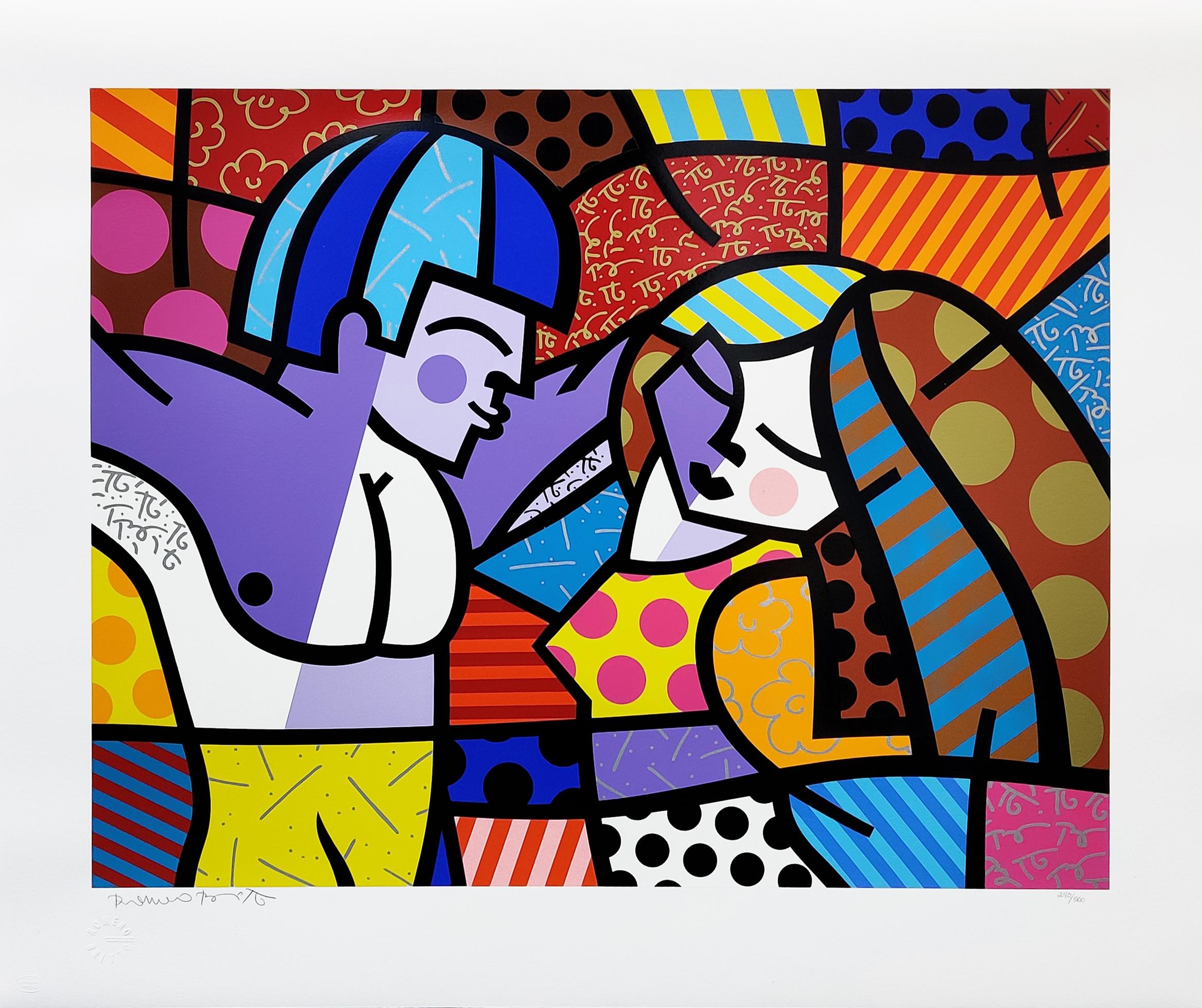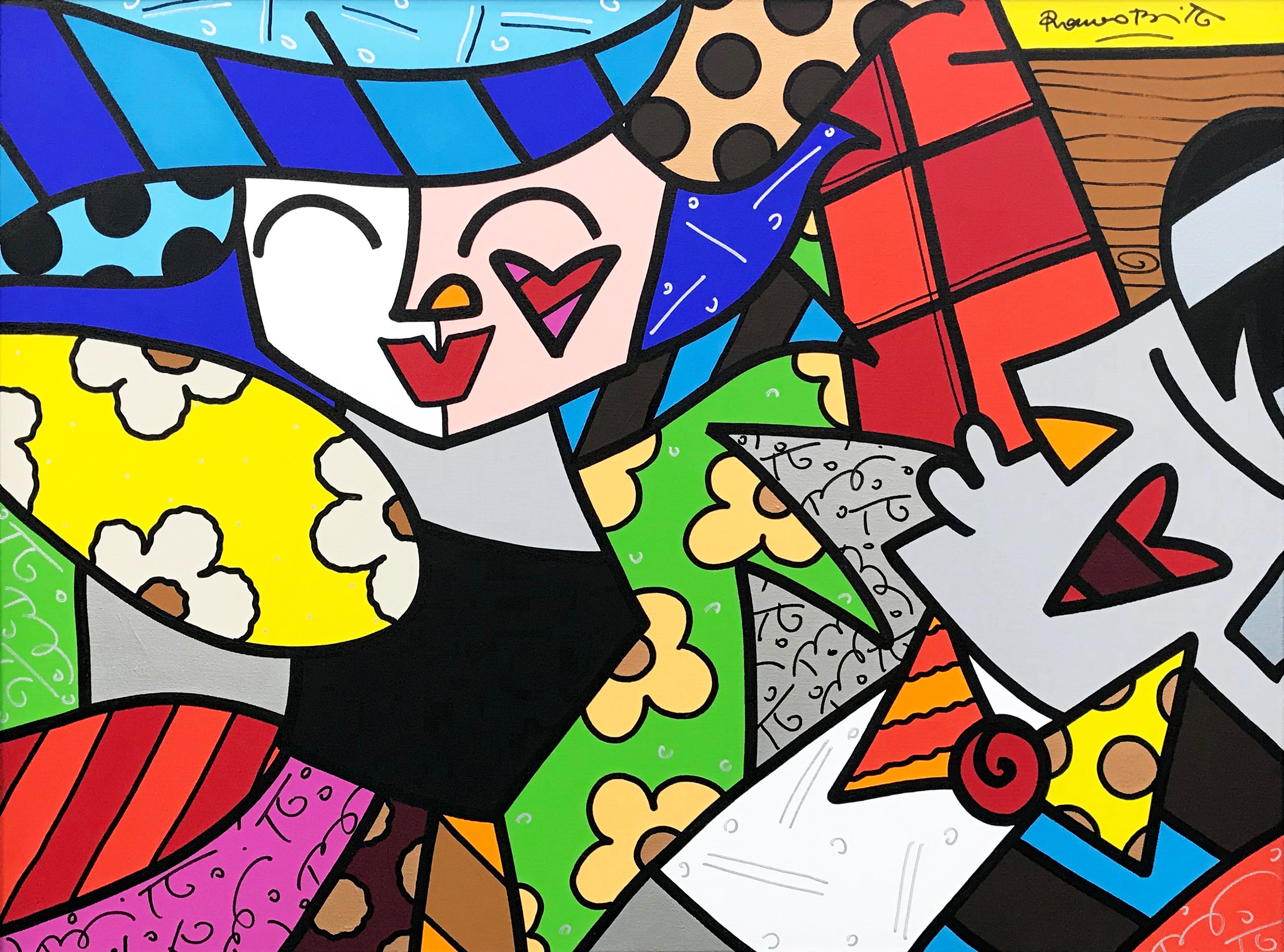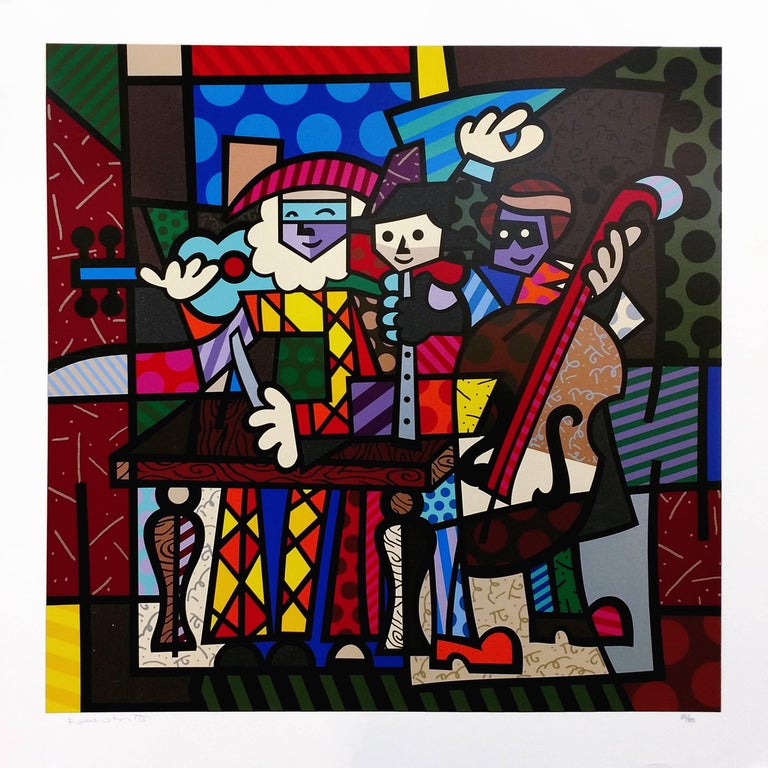Romero Britto Art For Sale – This creative process not only gives new life to old objects but also encourages people to think outside the box when it comes to the things they buy and use. When we begin to view everything through the lens of commerce, it’s easy to lose sight of the things that make life worth living — the moments that aren’t for sale, the experiences that can’t be bought. The idea of “everything for sale” challenges our understanding of what is sacred, what is essential, and what is truly priceless. Online marketplaces have opened up opportunities for people to buy and sell goods from the comfort of their own homes. Moreover, buying second-hand items allows consumers to access unique and vintage products that may no longer be available in stores, offering a sense of individuality that is often missing from mass-produced, new items. A home, a car, a piece of jewelry, a moment in time, a relationship — all of these things, at some point, become commodities. Yet, despite this shift, the appeal of quality craftsmanship has not waned. This can bring about feelings of uncertainty, as there’s no guarantee that the right buyer or partner will come along. Sellers also have to deal with the emotional aspects of letting go of a business that they may have built over many years. The idea that everything has a price, and that everything is for sale, may seem like a grim outlook, but it’s one that has become increasingly true. Second-hand goods for sale have become an integral part of today’s economy, a trend that transcends geographic, economic, and cultural boundaries. When you buy something made from premium materials, crafted with attention to detail, and tested for reliability, you can expect it to deliver value that surpasses its initial cost. Relationships can become transactional, where each party enters into an agreement based on what they stand to gain. When a car is put up for sale, it can feel like letting go of a part of one’s journey. A house can be bought, a car can be sold, a watch can be pawned. However, buying a business is not a decision to be taken lightly. This is particularly important in a world where design has become a central element in consumer decision-making. For book lovers, buying second-hand books is an affordable way to build a library, and it can also be an opportunity to find rare or out-of-print titles that are no longer available in stores. For the seller, the goal is often to maximize the value of the business, which requires a clear understanding of the company’s assets, liabilities, and future earning potential. The rise of online platforms dedicated to the sale of second-hand goods has also played a significant role in the growing popularity of pre-owned items.

Romero Britto FIRST LOVE For Sale at 1stDibs
Sign up onlinesign up for newsletterbuy online170,000 artists

Romero Britto Romero Britto Large Original Acrylic Painting On Canvas
Sign up onlinesign up for newsletterbuy online170,000 artists

Romero Britto Art for Sale
Sign up onlinesign up for newsletterbuy online170,000 artists

Lot ROMERO BRITTO "MY BRAZILIAN CAT" PAINTING, 1997
Sign up onlinesign up for newsletterbuy online170,000 artists

Romero Britto Art for Sale
Sign up onlinesign up for newsletterbuy online170,000 artists

Romero Britto Art for Sale
Sign up onlinesign up for newsletterbuy online170,000 artists

Romero Britto SPANISH SENSATION For Sale at 1stDibs
Sign up onlinesign up for newsletterbuy online170,000 artists

Romero Britto Art for Sale
Sign up onlinesign up for newsletterbuy online170,000 artists

Romero Britto Art for Sale
Sign up onlinesign up for newsletterbuy online170,000 artists

Romero Britto Art for Sale
Sign up onlinesign up for newsletterbuy online170,000 artists
While some people may be hesitant to purchase pre-owned electronics due to concerns about quality or reliability, the second-hand market for electronics has become increasingly trustworthy. From the most trivial items in a dollar store to the most precious works of art in a museum, everything can be assigned a price. Online platforms also offer the convenience of searching for specific items, whether it’s a rare collector’s item, a particular brand of clothing, or a piece of furniture that fits a specific design style. This ensures that the product is fully functional and free of defects, providing peace of mind for buyers. The story behind the item becomes part of its value, adding an emotional dimension to its physical form. Some businesses are sold because the owner is ready to retire, while others might be sold due to financial difficulties or changes in the owner’s personal or professional life. In a circular economy, items are kept in use for as long as possible, reducing the need for new resources and minimizing environmental harm. Thrifted clothing, vintage furniture, and pre-owned electronics are often seen as more authentic and unique than brand-new, mass-produced items. These items are often crafted with a sense of purpose, where every stitch, joint, and component is carefully considered to create a product that not only functions well but looks beautiful in the process. While there are certainly markets where affordable goods are a necessity, quality goods for sale often come with a premium price tag. These moments remind us that there is more to life than the pursuit of profit, and that not everything can be measured by a price tag. In the end, the phrase “for sale” is about more than just the exchange of money for goods or services. Similarly, vinyl records have experienced a resurgence in recent years, with collectors seeking out rare albums and vintage pressings. This is especially true in a world dominated by fast fashion, disposable electronics, and mass-produced products. A well-made product simply performs better. This typically involves drafting and signing a sale agreement, which outlines the terms and conditions of the transaction. Quality goods stand in stark contrast to this cycle. Both the buyer and the seller are seeking the best possible terms, and finding common ground can be a challenge. It doesn’t fall apart after a few uses, nor does it need to be replaced after a season. But is this a reflection of reality? Or is it an illusion we’ve created, an idea we’ve accepted in order to make sense of a world that increasingly revolves around consumption and profit?
At the core of this idea lies the assumption that everything, no matter how unique or rare, can be exchanged.
The rise of minimalist living, which emphasizes owning fewer, more meaningful possessions, has played a role in this shift. When it’s put up for sale, it can bring with it a sense of loss, as if a piece of the seller’s life is being taken away. Quality goods stand in stark contrast to this cycle. This is particularly evident in industries such as furniture, clothing, and electronics. It is also important to check the seller’s reputation and read reviews or feedback from previous buyers. The idea that everything has a price, and that everything is for sale, may seem like a grim outlook, but it’s one that has become increasingly true. Similarly, in relationships, individuals may feel as though they are selling themselves, presenting their best qualities and hoping for the best outcome. Success after the acquisition depends on a variety of factors, such as effective leadership, market conditions, and the buyer’s ability to make improvements and capitalize on growth opportunities. Whether it’s an item, a service, or even a person, the act of being “for sale” represents a moment of transition, a shift from one stage of life to another. The possibilities are endless, and the result is often something more unique and personal than what could be bought new. When someone buys a second-hand item, whether it’s a piece of furniture passed down through generations or a retro jacket from a bygone era, they are not just acquiring an object; they are connecting to a story, a memory, or a cultural moment. Thrift stores, consignment shops, and online marketplaces like eBay and Poshmark provide a platform for people to sell or buy pre-owned high-quality goods. For instance, when someone is job hunting, it can feel like they’re placing themselves on the market, waiting for the right offer. A new smartphone, for example, can cost hundreds of dollars, but buying a used one can cut the price down by more than half. For sellers, this creates an opportunity to declutter their homes and make some extra money, while buyers have access to a vast marketplace of affordable, unique, and sustainable products. Sellers often find themselves in a strange position, balancing the emotional attachment to the item with the rational need to let it go. The decision to sell an heirloom piece of furniture, for example, can be emotionally complex, as it involves a shift in one’s connection to the past. This shift in mindset has contributed to a growing acceptance and even celebration of second-hand shopping, making it a mainstream activity that is not just about saving money but about making more thoughtful and responsible choices. It may have been passed down, carefully preserved, and lovingly maintained. It’s a world where even personal growth, self-actualization, and emotional healing are framed as commodities, available for purchase at any time, but only if you’re willing to pay the price.